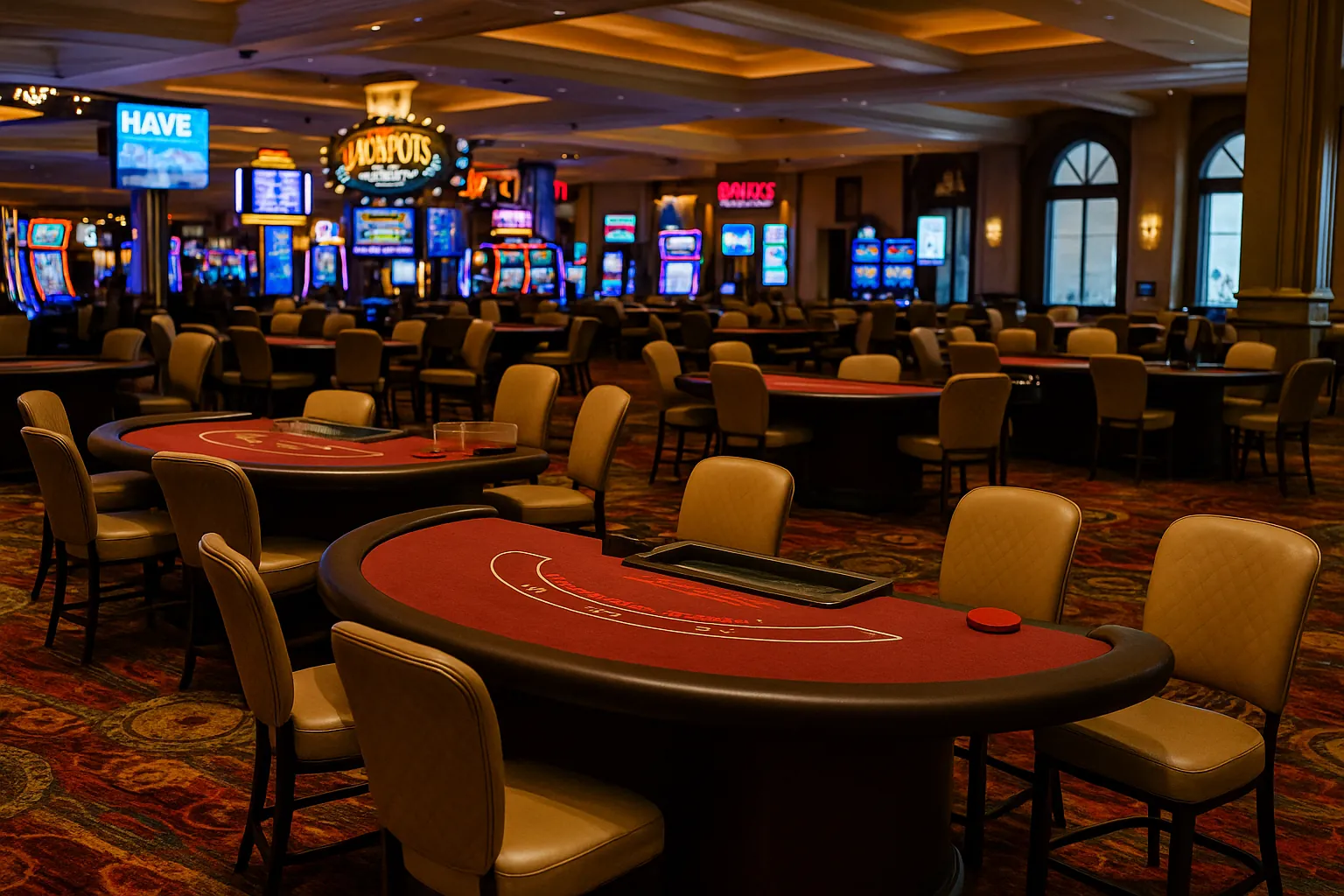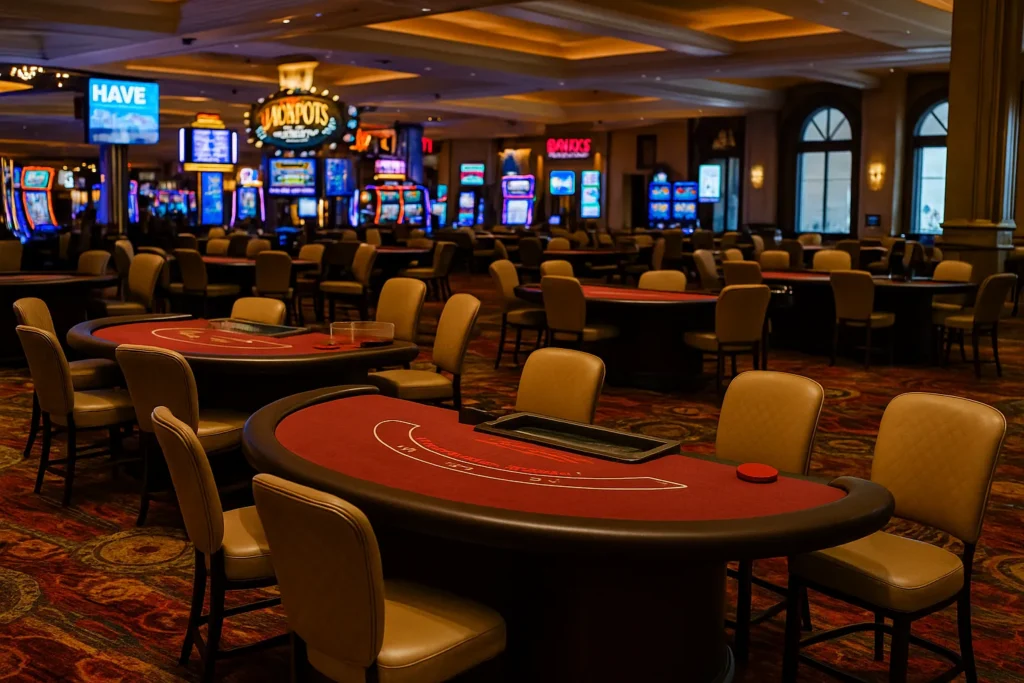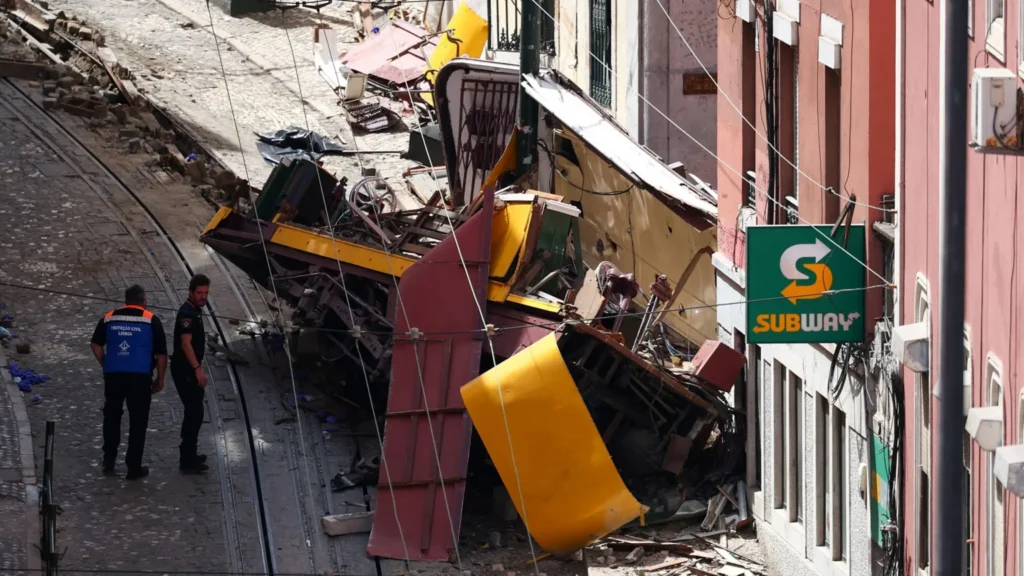The Las Vegas tourism crisis has erupted with an 11% year-over-year decline in visitor volume, the sharpest drop since the pandemic lows. Officials blame rising costs, a Canadian boycott, and tariffs that keep international travelers away. The decline exposes the fragility of an industry long considered recession-proof. Casinos, shows, and restaurants — the lifeblood of the city — are now staring at empty tables, echoing the silence of 2020. The question is unavoidable: has Las Vegas priced itself out of its own market?
Context: Mainstream Narrative
Mainstream media portray the decline as a temporary setback. Rising hotel and flight prices are framed as the inevitable outcome of inflation, while casinos are said to remain resilient thanks to domestic tourists. Officials insist that stimulus measures and targeted advertising will revive demand, pointing to comparisons with other U.S. cities like San Francisco and New York, which also struggle with post-pandemic slowdowns.
The New York Times emphasizes external pressures: tariffs that reduced Asian and European travel, plus a Canadian boycott tied to political disputes. The official narrative suggests that Las Vegas is merely caught in a global storm and that recovery is inevitable once macroeconomic conditions stabilize.
Oppositional Argument: Beyond Inflation Excuses
But this mainstream framing masks deeper problems. The Las Vegas tourism crisis is not just about inflation or tariffs. It is about systemic overpricing, a deliberate strategy that turned the city into a luxury bubble. The promise of “affordable escapism” that once defined Las Vegas has been replaced with $20 cocktails, $300 show tickets, and resort fees that rival rent.
Boycotts expose the vulnerability of a destination dependent on international goodwill. The Canadian boycott, sparked by political friction, shows how a single diplomatic dispute can rattle an entire local economy. And tariffs? They don’t just make flights more expensive — they signal that Las Vegas can no longer count on being the global playground it once marketed itself as.
The official optimism ignores what’s visible on the Strip: half-empty casinos, restaurants struggling to fill tables, and show producers slashing costs. The city is bleeding from within, not just from global headwinds.
Analytical Breakdown: Causes and Consequences
1. The Pricing Spiral
Las Vegas built its brand on the idea of cheap rooms subsidized by gambling. That model collapsed as casinos discovered they could squeeze tourists with resort fees, premium dining, and entertainment. What began as a shift toward luxury now looks like price gouging. Visitors are balking — and leaving.
2. International Fallout
The Canadian boycott cut one of the most reliable tourist pipelines. Tariffs have discouraged European and Asian travelers, once the high-spending backbone of the Vegas economy. When your model depends on $500-a-night spenders, losing them is catastrophic.
3. Domestic Limits
Yes, domestic travelers still come. But they spend less and stay shorter. The model built on “whales” — gamblers who spend millions — cannot be replaced by middle-class weekenders. As a result, revenue drops even when headcount looks stable.
4. Broader Economic Context
Other cities are facing similar hits, but Las Vegas magnifies the trend because it lacks diversification. San Francisco leans on tech. New York leans on finance. Las Vegas leans on entertainment — and when that collapses, there is no safety net.
The consequences are grim: layoffs in hospitality, cuts in show productions, and reduced tax revenues. Local businesses outside the Strip also suffer as the ripple effect spreads.
Human Perspective: The Empty Tables
Talk to workers and the crisis becomes visceral. A blackjack dealer describes hours of downtime at a table once packed every night. A show performer says management cut rehearsals and staff. Hotel cleaners are assigned fewer rooms because floors are left unbooked.
Beyond employees, small business owners who supply casinos feel the crunch. Taxi drivers complain of longer waits for fares. Bartenders watch customers split one cocktail instead of ordering two. These stories show the real damage: the city’s identity as a nonstop carnival is cracking.
Counterarguments
Supporters of the mainstream view argue that the city has always bounced back. After 2008, after COVID-19, Las Vegas roared back stronger. Why not now?
The difference is structural. Inflation can fall. Tariffs can end. But once tourists perceive a destination as overpriced, that reputation is hard to shake. Vegas is now associated with gouging, not glamour. Even if conditions improve, travelers may choose Miami, Mexico, or Dubai instead.
Conclusion: Rethinking the Vegas Model
The Las Vegas tourism crisis is not just an economic downturn. It is a reckoning. The city’s leaders face a stark choice: double down on overpriced luxury, or return to the formula that made Las Vegas irresistible — affordable escapism with high-volume turnover.
Stimulus alone won’t fix this. Nor will ad campaigns promising glamour. What’s needed is structural reform: transparent pricing, elimination of predatory fees, and rebuilding trust with both domestic and international travelers. Without it, Las Vegas risks a slow bleed into irrelevance, its neon lights dimming under the weight of its own greed.
External Links
47 views


